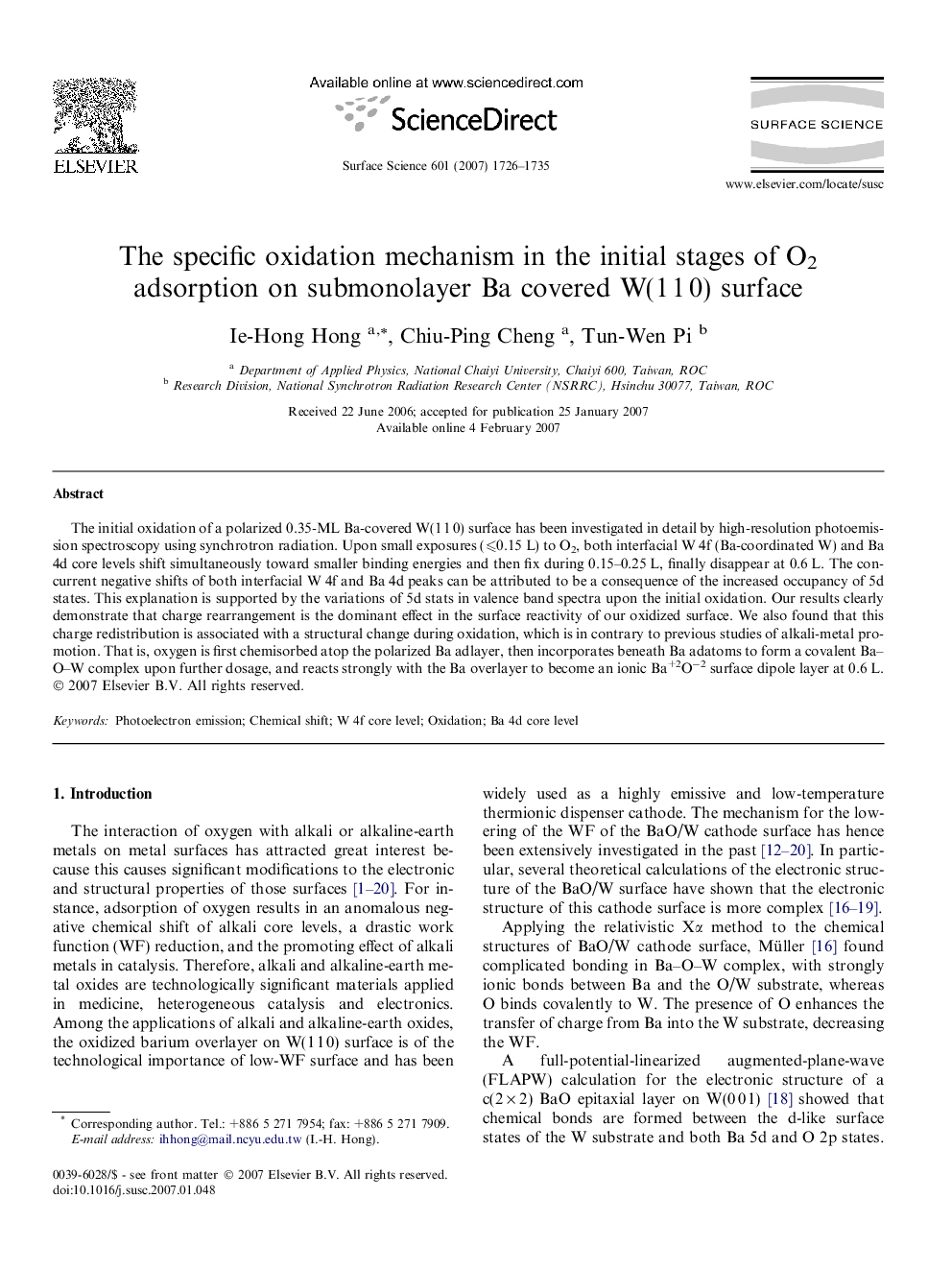| Article ID | Journal | Published Year | Pages | File Type |
|---|---|---|---|---|
| 5424856 | Surface Science | 2007 | 10 Pages |
The initial oxidation of a polarized 0.35-ML Ba-covered W(1 1 0) surface has been investigated in detail by high-resolution photoemission spectroscopy using synchrotron radiation. Upon small exposures (⩽0.15 L) to O2, both interfacial W 4f (Ba-coordinated W) and Ba 4d core levels shift simultaneously toward smaller binding energies and then fix during 0.15-0.25 L, finally disappear at 0.6 L. The concurrent negative shifts of both interfacial W 4f and Ba 4d peaks can be attributed to be a consequence of the increased occupancy of 5d states. This explanation is supported by the variations of 5d stats in valence band spectra upon the initial oxidation. Our results clearly demonstrate that charge rearrangement is the dominant effect in the surface reactivity of our oxidized surface. We also found that this charge redistribution is associated with a structural change during oxidation, which is in contrary to previous studies of alkali-metal promotion. That is, oxygen is first chemisorbed atop the polarized Ba adlayer, then incorporates beneath Ba adatoms to form a covalent Ba-O-W complex upon further dosage, and reacts strongly with the Ba overlayer to become an ionic Ba+2Oâ2 surface dipole layer at 0.6 L.
